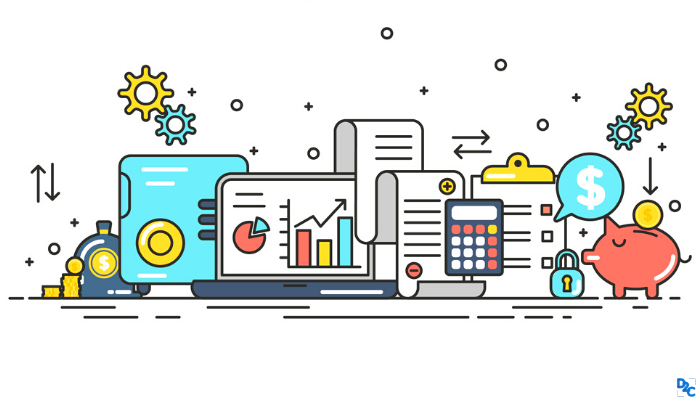Is phygital banking the Hail Mary to our post-covid banking problems?

There are uncountable financial reforms happening in the country and one such major reform is in the banking industry. Amazingly, there are so many ingredients in the mix: regulation, IoT, mobile & cloud banking, client expectations, robot-advisory, Fintech, the rise of millennials, etc. One of the flabbergasting blends is of the physical and digital world into phygital banking.
As a part of the new normal, people are now travelling less and are confined to the four walls, which is giving a push to the isolated economy. Countries and local governments are working towards regaining and reopening economic movement, with little success. When we are looking at quarantining to remain alive, our banking sector came to the rescue and did its bit. The digital revolution in the banking sector has been a long time coming. Where millennials and their neighbouring age groups were transacting online even before the lockdown, the older generation offered much resistance. Let us look at some numbers and explore where the future of the banking sector is headed.
Shaping new trends of phygital banking
Due to COVID-19 people are now shifting towards the digital era. As per the reports, there has been a 20-40 % increase in digital banking during the lockdown. Most customers are trying their hands at digital services for the first time. RBI has given many relaxations over certain regulations which have led to decreased footfall in the banks. User experience is also playing a crucial role in online banking transactions such that phygital banking has now emerged as a well-missioned reform to create an engaging customer journey.
As per the analysis, during lockdown there has been an increase in the digital transaction by 30% at Federal bank, 73% of transactions are digital at South Indian bank and almost the same hike is observed in digital transactions at Canara bank as well.
Other than that, as per a statement delivered by Prakash Sukumaran, Assistant General Manager of the SBI Digital Banking wing, there has been an increase of 20-35% in digital transactions and a 15-20% increase in the use of the YONO app of SBI.
The country's largest payment bank Paytm Payments Bank have also recorded a 55% jump in PAT in lockdown. The profit after tax for the financial year 2019-20 stood at INR 29.8 crore, up from INR 19.2 crore in the last fiscal. It has facilitated more than 485 crore transactions worth INR 4.6 lakh crore in the previous fiscal year. The annual revenue has also shown a sharp increase in the fiscal year and has crossed INR 2100 crore. To meet the demands of digital payments Paytm has also partnered with Citi bank to launch credit card services.
Moreover, Razorpay in its fifth edition report has said that during lockdown among all UPI apps, Google Pay has contributed the highest with a 46% share followed by PhonePe with 29% and Paytm with 10%. The data also showcased that payment mode of UPI is making the highest contribution of 43% followed by cards including debit & credit with 39% and net banking with 10%.
Striking a balance between physical and digital
Axis Bank’s MD and CEO Amitabh Chaudhry said in a recent interview that they are adding 400 branches annually and intend to add 400 every year until it reaches about 5,500 branches. As per the reports, Axis Bank opened its 4,000th branch in March 2019. RBL Bank has also seen a steady increase in its network from 265 branches as on March 31, 2018, to 324 branches on March 31, 2019. HDFC Bank joined the trend and opened its 5,000th branch in February 2019. This was the scenario pre-lockdown. A lot has changed since then.
With the pandemic not retracting anytime soon, visiting a branch physically poses a grave risk. Even the age group of 45-60 that preferred to bank physically is adapting to digital banking. Now that they have tasted blood and see the ease with which they can transact online, they will visit the branch only to operate the locker facility, personalized wealth management, etc. Various measures have been taken to a safe, secure, stable, and affordable retail payment:
- NEFT payments free and available 24/7
- A self-regulatory organization (SRO) to improve security, customer protection, and pricing in India's digital payment system.
- Bharat Bill Payment System to cover repetitive bill payments
The Indian tradition on going to the bank!
As per a global survey conducted by Deloitte, it was found that many people visit a branch for account opening. Customer satisfaction with branches is a stronger determinant as compared to online or mobile channels. Traditional channels are equally important as it creates a lasting impression. Moreover, it indicated that more than four in 10 customers who disputed a transaction or filed a complaint did so through contact centres.
The numbers so far suggest that the physical banking ecosystem is important as it impacts the customer journey. In the wake of the pandemic, every domain is cutting down on physical interaction. All eyes are towards the banking sector now, on how they can digitally create an impression on their customers. This becomes slightly tricky as the generation that they need to convert to digital has been untouched by the digital revolution, that has swept the Millenials of the nation off their feet!
The question still remains, will we go back to banking the old way as we did pre-corona or the phygital banking system is here to stay!
To get more insights into the world and economy during the Corona crisis, you can look out for:
Login to continue reading
And access exclusive content, personalized recommendations, and career-boosting opportunities.
















Comments
Add comment